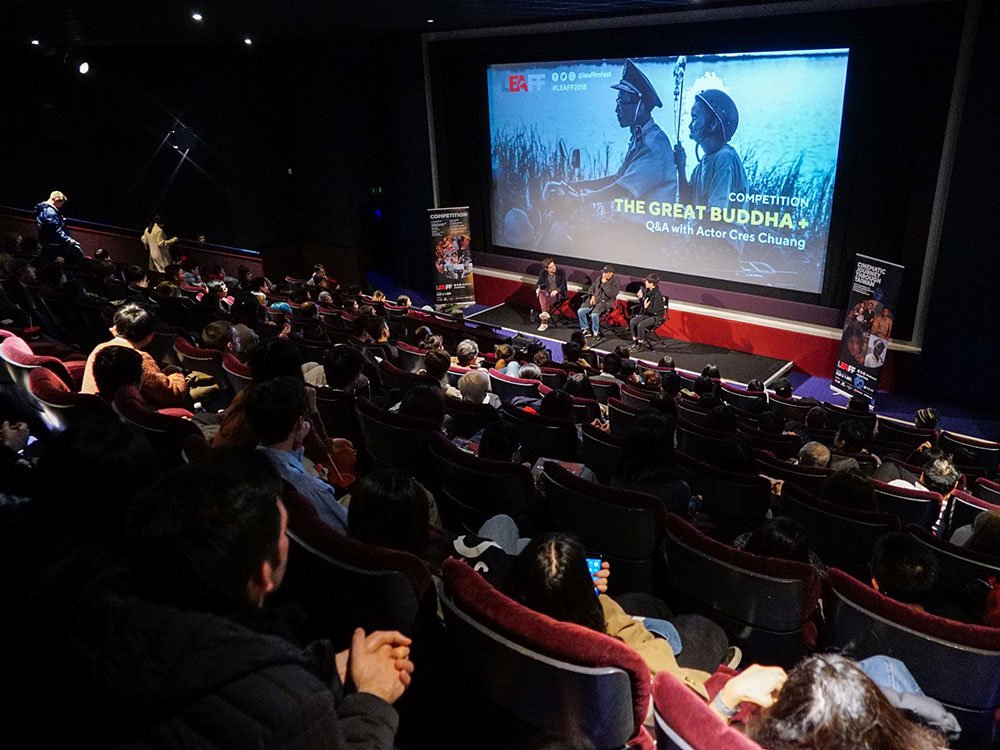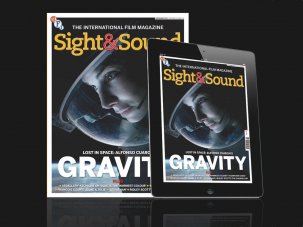
London East Asia Film Festival 2018, The Great Buddha Q&A
We collect data to measure impact and inform our strategy moving forward, and to share key findings with the industry, which we hope you find useful. Thanks to funded partners who collect this hugely valuable data, and we urge you to continue to encourage audiences to provide it. We will share more learnings and case studies via the BFI Audience Fund’s monthly awards bulletin throughout the year.
Ben Luxford, Head of UK Audiences, BFI
Key learnings
In year two of BFI2022, the proposals to the BFI Audience Fund have embraced the aims and objectives of the fund, and applicants have shown greater confidence in how to address them. We are encouraged that by establishing a flexible fund, it has allowed more organisations to apply with a wider range of projects, increasing the number of points at which supported activities intersect with the wider industry, and extending the benefits of National Lottery funding across the sector.
A collaborative approach is a common theme for successful initiatives supported by the fund, as is activity with a clear sense of purpose, often encouraging participation – be it through Q&As and debate or wrap-around activity developing a sense of community. Reaching more 16- to 30-year-olds has led to increases in the diversity of audiences, as well as higher numbers of new audiences, meeting priorities set out in BFI2022. We recognise that the percentage of audiences identifying as disabled has declined over the period 2017-19, and the need for screening accessibility and outreach to those audiences must be better met.
Successful highlights include:
- StudioCanal’s release of Yardie – with 125,000 admissions the biggest single supported project of 2018-19 – recorded 52% of survey respondents aged 16-30, and 75% identifying as BAME. National Lottery funding supported the satellite broadcast of the premiere and partnerships – including MASSIVE and We Are Parable – that provided outreach to priority demographics.
- London East Asia Film Festival achieved 66% of audiences 16-30 years old for its 2018 edition, with 61% of audiences identifying as BAME. The festival noted that screenings of classics attracted the most diverse audiences, and 20- to 30-year-olds were especially attracted to screenings that included Q&As. 67% of the festival’s audience was new.
Festivals continue to over-index on attracting priority audiences. Projects with clearly defined objectives and target audiences frequently deliver the best results. Shaping additional activity to meet those objectives from the outset provides a space for meaningful engagement on relevant topics, which is an increasingly important factor in getting under-30s to watch film in cinemas.
In the case of projects supported over the longer-term that are aiming to build loyal, active audiences for independent British and international film, sustained engagement on social media and curated events are proving crucial. It is the sincerity of the approach that stands out as being integral to success in winning over 16-30s. Some of these projects are beginning to scale up, and as 2019-20 progresses we will be able to share more information and insights on projects’ strategies which seek to take advantage of these promising audience development initiatives.
- Bird’s Eye View’s Reclaim the Frame (RTF) is a multi-faceted approach to developing audiences for films by women. It partners with venues, distributors, influencers and other initiatives to take a collaborative approach to getting audiences into cinemas. Bird’s Eye View works closely with filmmaking talent and considerately chosen speakers to create screenings that become unique, shared experiences for the audience, who in turn become loyal advocates. By then end of March 2019, RTF has supported six new releases with 27 screenings, and 22% of audiences identified as BAME and 33% were 16-30 years old. By the end of June 2019 the project had expanded to 10 cities and 14 venue partners. The current phase of project runs to March 2020 and a further 10 new films will be supported over 2019-20.
The BFI Audience Fund continues to be ambitious in its aims, and prioritises applications that seek to engage BFI priority audiences on a larger scale, and we will encourage applicants to further in their own ambitions.
The Numbers
In 2018-19:
- 68 projects were awarded National Lottery funding by the BFI Audience Fund
- 63 awarded projects started
- 98% of projects taking place in 2018-19 took place either fully or partially outside of London
Of 63 projects beginning in 2018-19, 58 have reported audiences and admissions data to date, with just over 2.9m admissions in total. Cumulatively reported were
- 72,903 screenings
- in 1,178 locations
- presenting 2,778 different feature films
From the 58 reported projects, 18,633 audience surveys have been have been collected! Collating the results, we can say that of the survey respondents:
- 35% are 16- to 30-year-olds
- 16% identify as BAME
- 22% identify as LGBTQ+ (sexual orientation)
- 9% identify as Disabled
The targets set by the BFI Audience Fund in 2018-19 for priority audiences were:
- 20% 16-30 years old
- 14% identifying as BAME
- 12% identifying as LGBTQ+ (sexual orientation)
- 10% identifying as Disabled
As well as three of the four priority audience targets being exceeded, the 2018-19 results show good progress over the course of the fund so far. To compare, BFI Audience Fund results for supported projects in 2017-18 were:
- 24% were 16- to 30-year-olds
- 15% identified as BAME
- 15% identified as LGBTQ+ (sexual orientation)
- 10% identified as Disabled
Considering the success in reaching 16- to 30-year-old audiences and the correlation between younger audiences and increased ethnic diversity, we are stretching the fund’s target for BAME audiences in 2019-20. This is based on the UK’s working age population demographics, and reflects the BFI Inclusion Target for its workforce and the people it funds.
As we have recognised, however, the target for Disability is not being achieved across the fund and it must be a focus for 2019-20 to ensure that the fund understands how interventions to reach these audiences can make a greater impact.
For 2019-20 the Audience Fund’s targets for audiences are:
- 20% 16-30 years old
- 20% identifying as BAME
- 12% identifying as LGBTQ+ (sexual orientation)
- 10% identifying as Disabled






